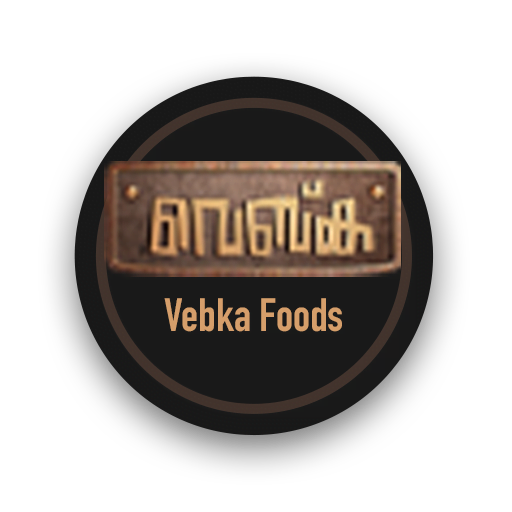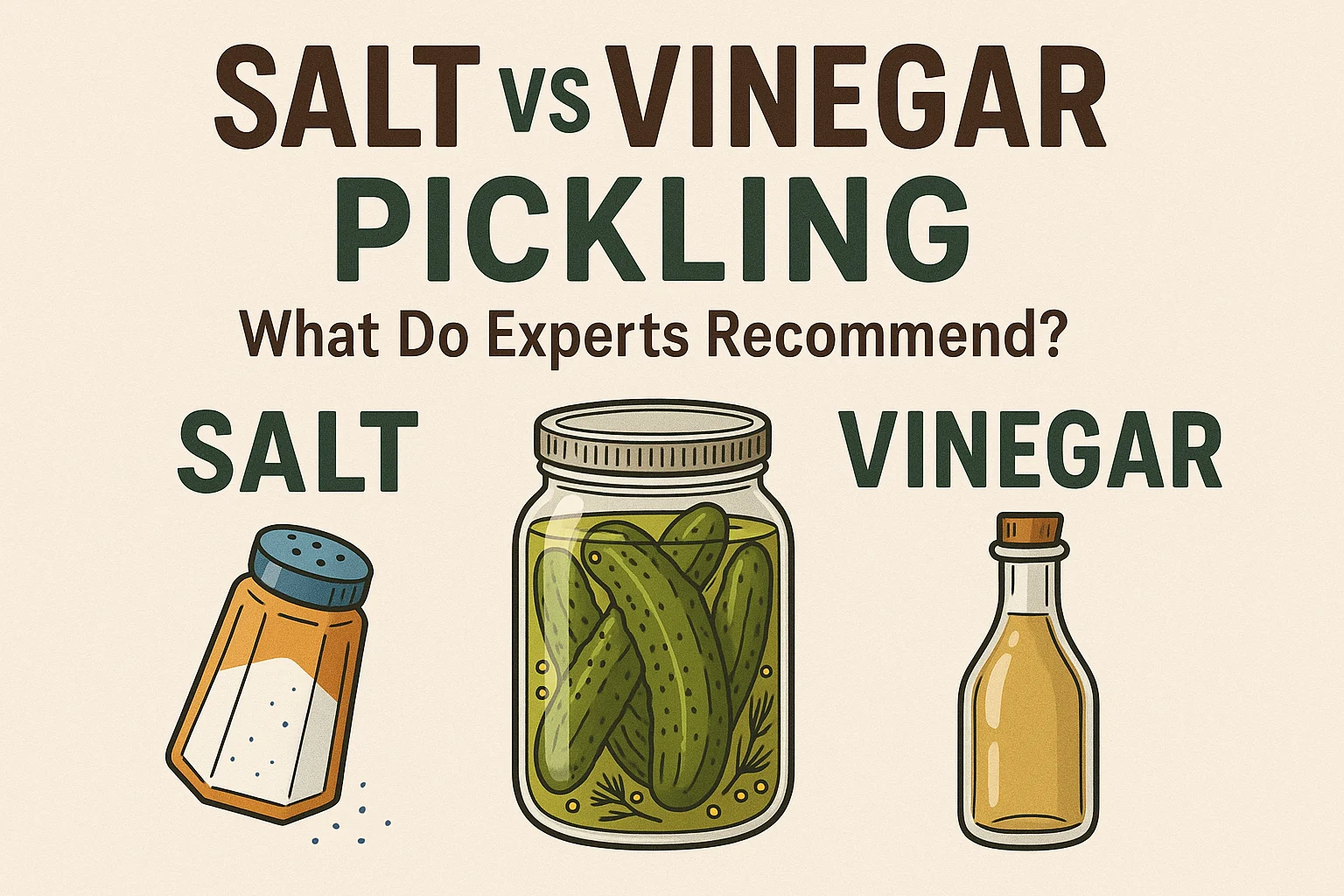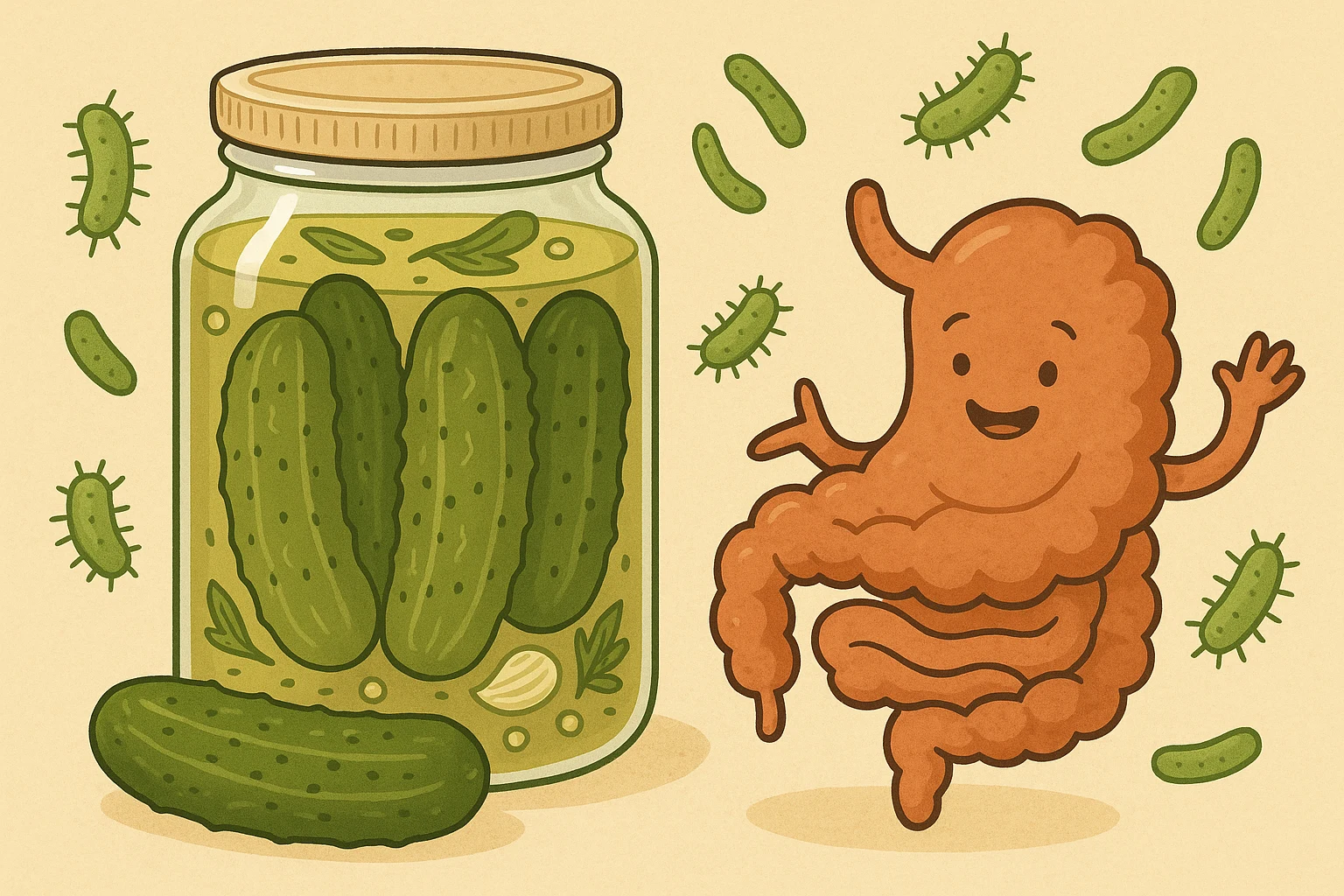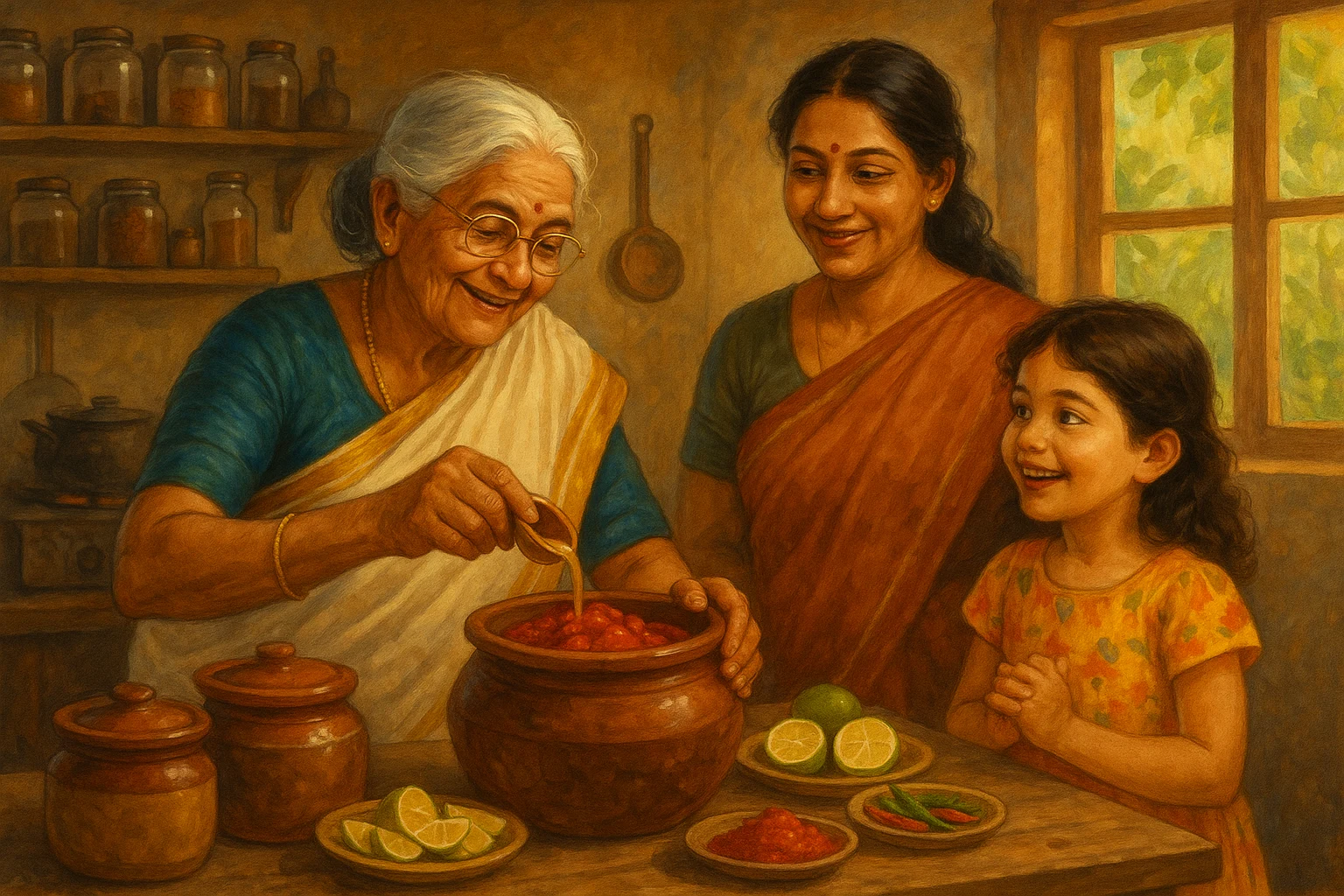Pickling vs Fermenting: Unravelling the Tangy Truth of Food Preservation
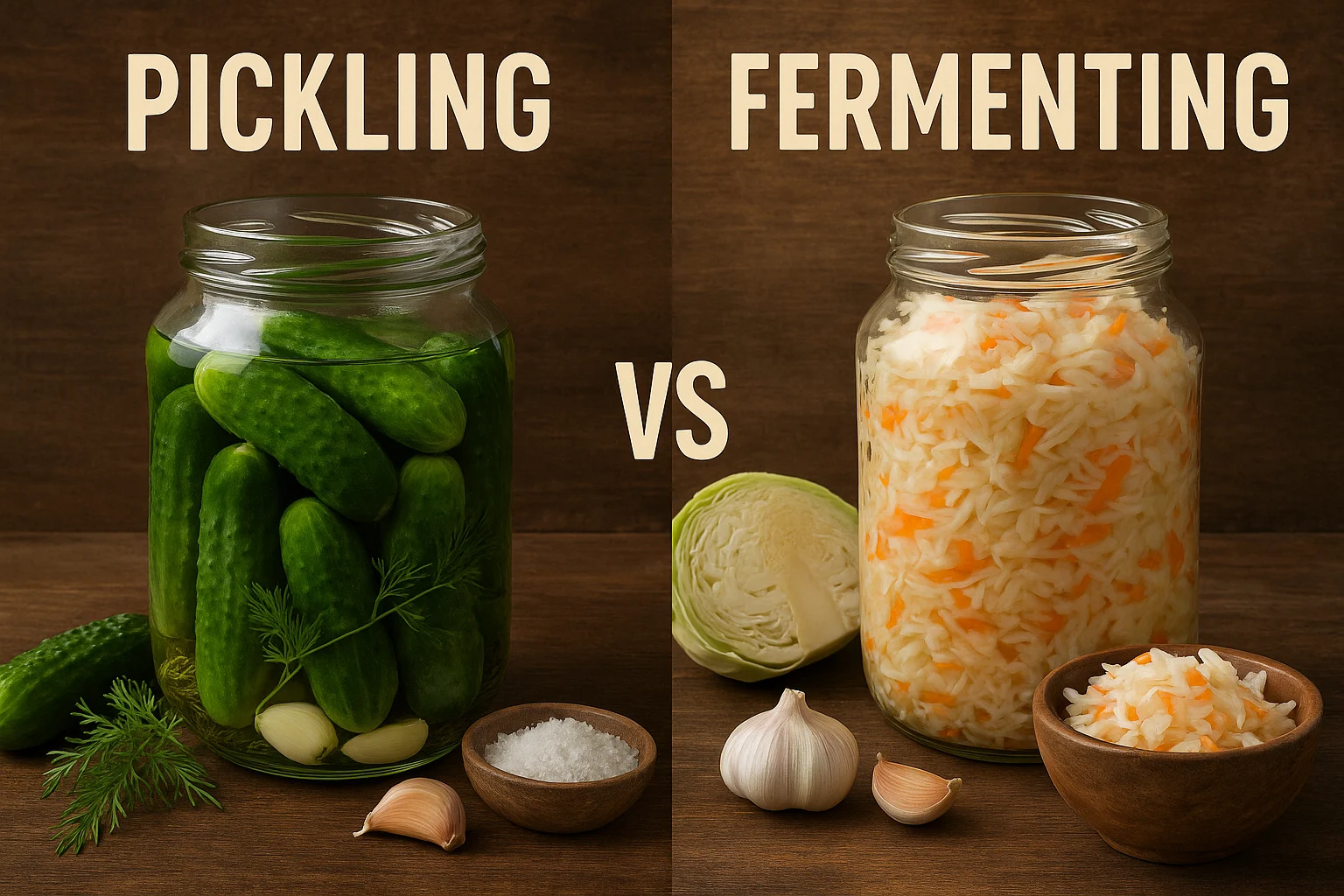
Have you remembered that taste of delicious lime pickle and the notes of fermented mangoes along with porridge, getting from grandma’s home with lots of love? Yes, the art of preserving food has deeply rooted in our culinary traditions. That single jar of gourmet treasures is filled with flavours and craving for tasty notes for a long time. In the case of preserving sour foods, there are two options: pickling or fermenting. Both have a strong taste and can prolong storage. But they are different processes. Pickling often uses vinegar or oil as a preserving agent. Fermenting, on the other hand, relies on natural bacteria to do the job, often bringing in probiotic health benefits. In the world of food preservation, understanding this difference can explore new flavor profiles, expand your culinary creativity and even improve your gut health. Let’s unpack both methods, understand their benefits of pickling vs fermenting from Kerala kitchens to global gourmet menus.
What Exactly is Pickling?
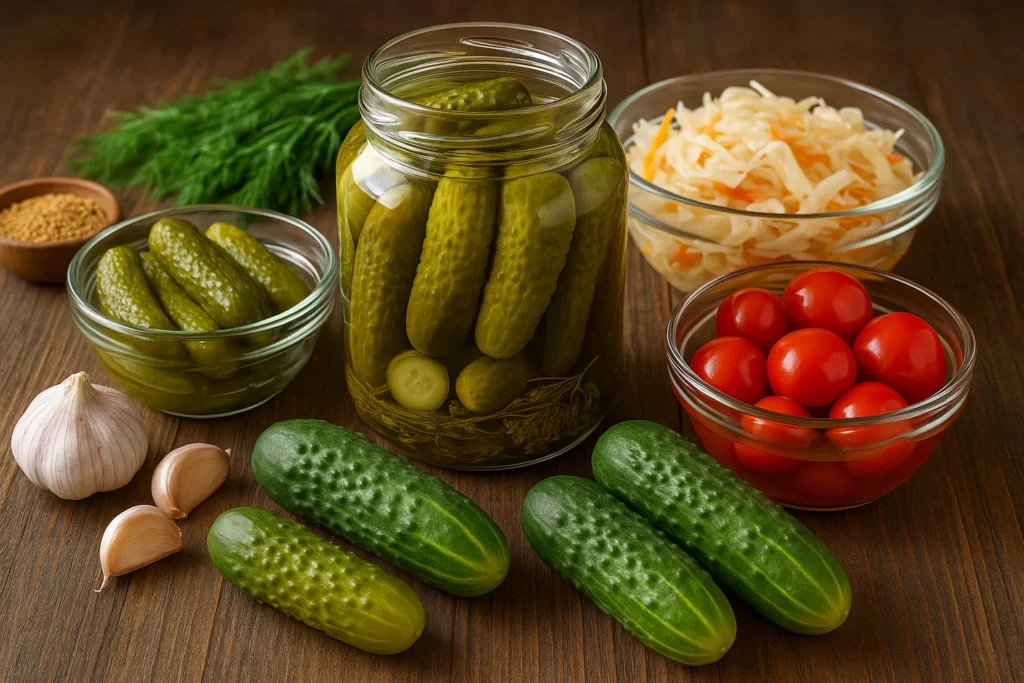
Pickling is a traditional food preservation method where fruits or vegetables are immersed in an acidic brine made of vinegar, water and pickling salt. This acidic braine can bring a hostile environment to prolong the shelf life of the product. The flavor can be enhanced by optional additions like garlic, chilly powder, Mustad powder, asafetida powder and curry leaves. In quick pickling, the brine is heated and poured over the food, using heat to kill microbes and speed up the pickling process. The result? A tangy and slightly softened bite with long shelf stability and bold flavor. So if you are wondering what is pickling, it is the perfect mix of science, flavor and tradition.
Dive Into the Delicious World of Pickled Foods
In Indian kitchens, pickling is a tradition. It is a method of food preservation where vegetables or fruits are immersed in an acidic brine, typically made from vinegar, water and salt. To add depth and aroma, spices, garlic, curry leaves and citrus peels can be included. Common pickled ingredients include tender mangoes (kadumanga), green chilies, carrots, ginger, garlic and bitter gourd. Some communities even prepare pickled fish, particularly dry fish or shark meat preserved in spicy vinegar mixtures. These common pickled ingredients reflect the deep-rooted love for intense, tangy and long-lasting flavors in Indian food culture.
The Health Perks of Pickled Delights
Beyond flavor, there are different pickled food health benefits. The vinegar used in Indian pickles supports digestion and helps to regulate blood sugar levels, particularly useful in diabetic diets. Pickled ginger, garlic and gooseberry are widely consumed for their antioxidant properties and to fight inflammation. Though not probiotic, pickled vegetables retain fibre, which functions as a prebiotic, feeding healthy gut bacteria. In the humid climate of Kerala, the salt content in pickles also helps maintain hydration and electrolyte balance, making pickles more than just a side, they are therapeutic too.
What is Fermentation All About?
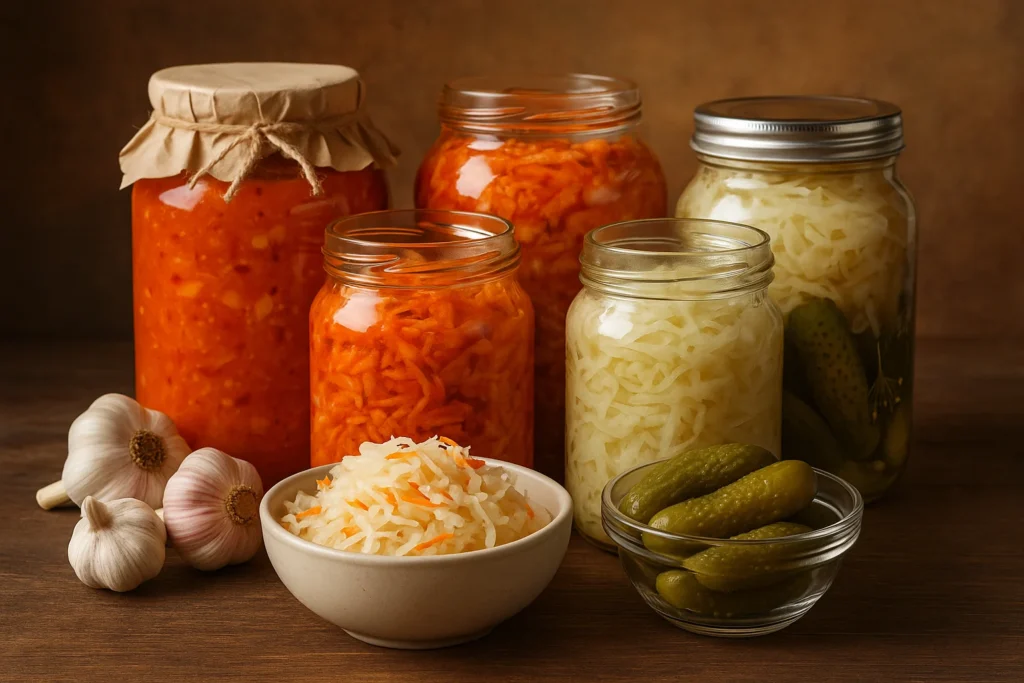
What is fermentation? It is an ancient preservation process where microorganisms like bacteria or yeast convert natural sugars into lactic acid, alcohol or gases, making the food both tangy and safe from spoilage. In Indian households, this happens naturally in foods like idli and dosa batter, kanji (rice water), curd and pickle brines when left to sit at room temperature. This microbial activity not only adds depth and umami flavours, but also enhances the nutritional profile by increasing vitamin levels and aiding digestion.
Understanding the Different Types of Fermentation
Indian cuisine consist of three major type of fermentation:
- Lactic Acid Fermentation: Used for foods like curd, kanji, fermented pickles and idli or dosa batter where starches turn into lactic acid for preservation and tang.
- Alcoholic Fermentation: Found in toddy (kallu) and rice beer made by tribal communities, where natural sugars ferment into mild alcohol.
- Acetic Acid Fermentation: Seen in the production of vinegar from palm wine or sugarcane and also in modern kombucha or apple cider vinegar made by health-conscious urban households.
Popular Fermented Foods and Drinks
India’s fermented food culture is vast. Everyday staples like curd, dosa batter, rice porridge, paniyaram and pickle brines are examples of this. In Kerala, common fermented food includes kappa kanji (fermented tapioca porridge) and rice water fermented with herbs are gaining popularity for their probiotic foods. Fermented drinks like buttermilk, sambharam and toddy represent traditional ways of incorporating healthy microbes into the diet. Modern additions like kefir, vinegar, ginger beer and miso are also making their way into Indian kitchens.
The Powerful Health Benefits of Fermented Foods
Fermented foods are known for their probiotic content, which improves gut health, boosts the immune system and supports nutrient absorption. Regular consumption can help manage bloating, indigestion and even inflammation. In India, people have long consumed curd and buttermilk for probiotics. However, it is important to note that some store bought fermented items may be pasteurized, which kills live cultures. To retain maximum fermented food health benefits, consume these foods fresh or homemade, without excess heat treatment.
Pickled vs. Fermented: The Key Distinctions
Here’s how pickling vs fermenting stack up:
- Preservation Method: Pickling uses vinegar (acid) added externally. Fermentation relies on natural microorganisms creating acid internally.
- Heat Use: Pickling often involves boiling. Fermentation usually avoids heat to preserve probiotics.
- Probiotics vs Prebiotics: Fermented foods can be probiotic-rich. Pickled foods, while not probiotic, are prebiotic due to fibre.
- Flavour & Time: Pickles offer quick and sharp tang. Ferments take longer, resulting in deeper, more complex sourness.
Are Pickles Always Fermented? Unpacking a Common Misconception
Are pickles fermented? The short answer is no. Most store bought pickles in India, including many Kerala pickles, are quick pickles made with vinegar not fermented. They are preserved through acid, not live bacteria. However, traditional pickles, especially homemade versions made with just salt, water and time, undergo lacto fermentation. These lacto-fermented pickles are naturally sour and often rich in probiotics if kept unheated and raw.
Section 10: Which is “Better”? The Complementary Benefits
When it comes to pickled vs fermented, one is not better, it depends on your health goals. Fermented foods are excellent for gut health offering live probiotics that strengthen digestion and immunity. Pickled foods aid in blood sugar regulation and offer prebiotics to feed gut bacteria. Including both in your balanced diet, think homemade curd and lemon pickle, is the best way to enjoy different flavors while supporting overall wellness.
Conclusion: Eat Smart, Eat Tangy
Understanding the science and culture behind pickling and fermenting can transform your culinary creations. These traditional food knowledge offer a powerful mix of unique flavors, healthy eating and food science. Whether you enjoy a spoonful of mango pickle with rice or a bowl of fermented kanji, you are tapping into generations of wisdom.
Explore Authentic Kerala Pickles with VEBKA FOODS
For those who want to experience the real taste of traditional Indian pickles, check out VEBKA FOODS. From fiery lime and tender mango pickles to authentic Kerala style preserves, VEBKA delivers bold and handcrafted flavors that bring the best of Indian culinary tradition to your plate.
Buy Kerala pickles from VEBKA FOODS and add a tangy twist to every meal.
